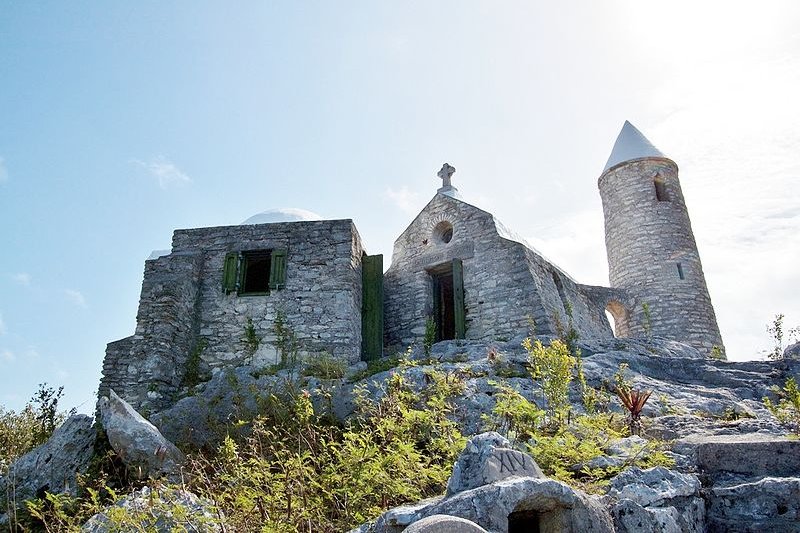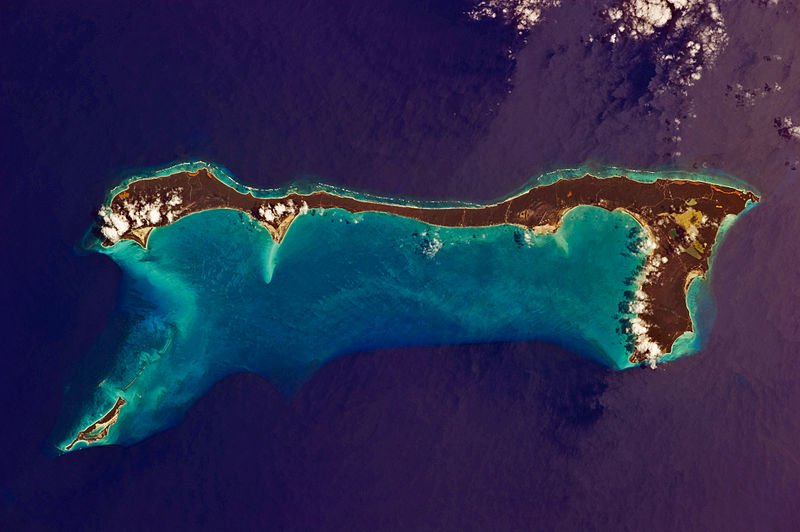 Hermitage of Mount Alvernia, Cat Island, Bahamas
Hermitage of Mount Alvernia, Cat Island, BahamasSource: https://en.wikipedia.org/wiki/File:The_Hermitage.jpg
Author: Shane.torgerson

Cat Island is an island in central Bahamas. It covers 389 sq km (150 sq mi) and has a population of around 2,000 people (2012 estimate).
The earliest Europeans to form a permanent settlement on Cat Island were British Loyalists to fled the American mainland following the American Revolutionary War. Arriving in 1783, they named the island after buccaneer Arthur Catt. The final "t" in the name was dropped over time, and the island shifted its association to felines.
Cat Island has the highest geographical point in the Bahamas, the 63-meter (206-ft) Mount Alvernia. Originally called Comer Hill, it was renamed when a Catholic hermitage was built at the top. The hermitage was built by Catholic priest Monsignor John Hawew, and renamed Mount Alvernia after La Verna, the hill in Tuscany, Italy, where St Francis of Assisi received the Wounds of the Cross. He died in 1956, and was buried in a cave under the hermitage.
 Satellite view of Cat Island, Bahamas
Satellite view of Cat Island, BahamasSource: https://en.wikipedia.org/wiki/File:Cat_Island,_Bahamas.JPG
Author: NASA

One of the attractions of Cat Island is Boiling Point. This is a rock formation caused by tidal erosion. The tidal condition causes bubbles and burps to form in the hold, resulting in a local legend of a sea monster that lives below the surface. The lake is a sanctuary for marine life and birds.
Another monster legend is associated with another rock formation, the Big Blue Hole near Orange Creek. The syphon process of undersea currents surging through the subterranean cavern often threw up objects such as farm animals, leading to legend of a monster that devour horses living in it.
 Latest updates on Penang Travel Tips
Latest updates on Penang Travel Tips

Copyright © 2003-2025 Timothy Tye. All Rights Reserved.

 Go Back
Go Back